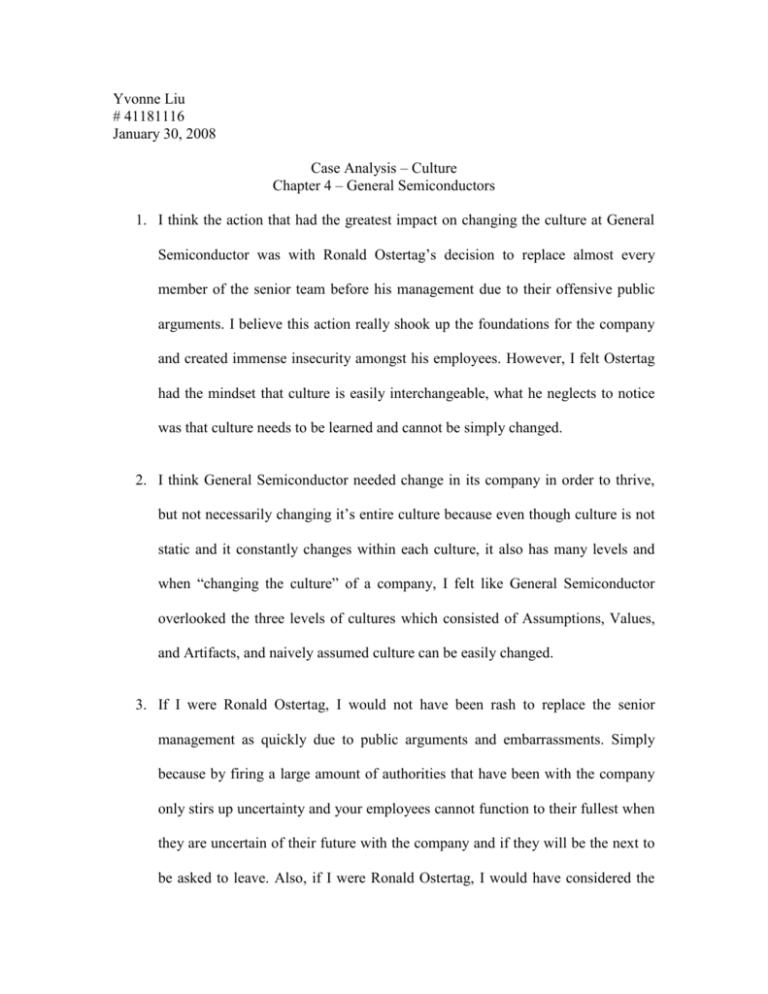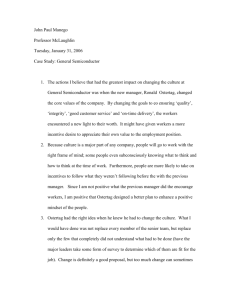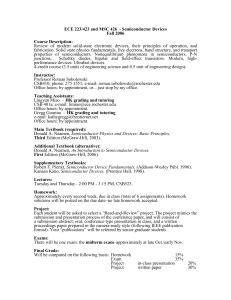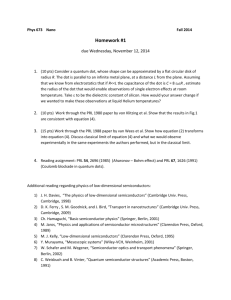File
advertisement

Yvonne Liu # 41181116 January 30, 2008 Case Analysis – Culture Chapter 4 – General Semiconductors 1. I think the action that had the greatest impact on changing the culture at General Semiconductor was with Ronald Ostertag’s decision to replace almost every member of the senior team before his management due to their offensive public arguments. I believe this action really shook up the foundations for the company and created immense insecurity amongst his employees. However, I felt Ostertag had the mindset that culture is easily interchangeable, what he neglects to notice was that culture needs to be learned and cannot be simply changed. 2. I think General Semiconductor needed change in its company in order to thrive, but not necessarily changing it’s entire culture because even though culture is not static and it constantly changes within each culture, it also has many levels and when “changing the culture” of a company, I felt like General Semiconductor overlooked the three levels of cultures which consisted of Assumptions, Values, and Artifacts, and naively assumed culture can be easily changed. 3. If I were Ronald Ostertag, I would not have been rash to replace the senior management as quickly due to public arguments and embarrassments. Simply because by firing a large amount of authorities that have been with the company only stirs up uncertainty and your employees cannot function to their fullest when they are uncertain of their future with the company and if they will be the next to be asked to leave. Also, if I were Ronald Ostertag, I would have considered the high and low context cultures. It is obvious that General Semiconductors were a very successful company with employees all over the world and with that comes with immense diversity within the company. Since most of its employers are in Asia, and considered as high context culture, Ostertag should have reconsidered his approach, which is what I would have done. 4. Like Ronald Ostertag, I would want to measure my outcome to change the culture by testing if the program I have implemented was effective or not. In Ostertag’s case, his implementation to enforce the “our tasks” which were the core values of General Semiconductor have shows 36-39% of development, which is essentially effective in a 6,000 people company. In my case, I would want to relate back to cultural adaptation and check if the employees have successfully transitioned through the five phases and achieved balance between the two. Unfortunately for General Semiconductors and Ostertag’s effort, it proved to be not enough to keep the company with its management and eventually was taken over by Vishay Intertechnology.




